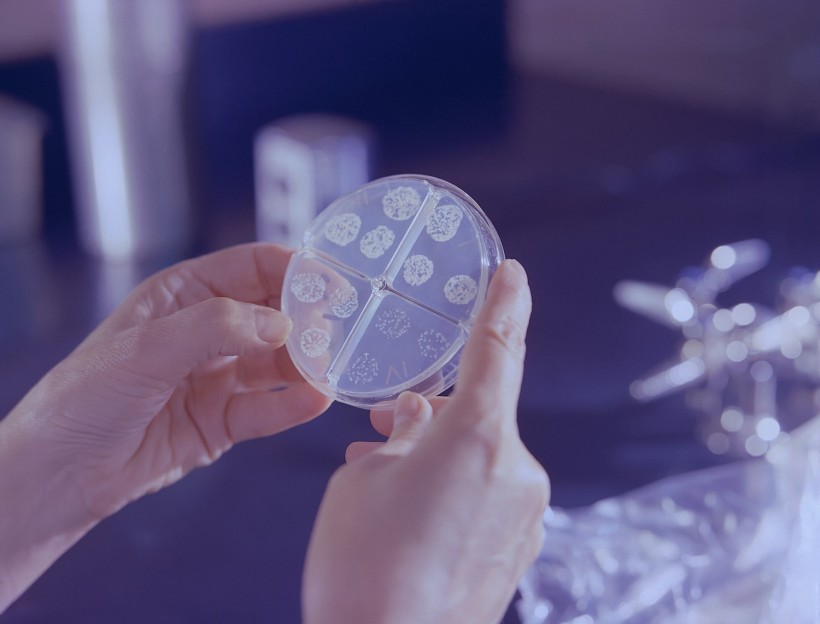A research published in Applied and Environmental Microbiology revealed that bioinsecticide Photorhabdus luminescens could protect plants against fungal infection. Professor Ralf Heermann of Johannes Gutenberg said that the result of the research is a prime opportunity to make farming more sustainable and environmentally friendly.

Mycobacterium tuberculosis drug susceptibility test.
Photorhabdus luminescens Antifungal Property and Insecticidal Property
According to scientists, the secondary cell form of the bacteria gives its antifungal effects. The researchers realized while observing the beef tomato plants infested by the phytopathogenic fungus Fusarium graminearum that the infestation can be prevented by the bacteria with the antifungal process. The infestation happened when the bacteria colonized the fungal hyphae and then destroyed it by degrading the chitin, the major component of the fungi's cell wall.
The researchers were able to pinpoint the molecular mechanism that involves the enzyme chitinase in a chitin-binding protein. It allows the bacteria to break down a fungus' structure, specifically its cell wall, and fungus growth. The research team then looks into the exciting potential that P. luminescens presents in four biological crop protection.
The discovery of the secondary phenotypes cell happened two years ago. The cell could not undergo symbiosis with nematodes but could survive in soil. It is genetically similar to the primary form. However, it lacks several phenotype characteristics, such as bioluminescence.
Photorhabdus luminescens (P. luminescens) primary cells can destroy insect larvae. The bacterium lives in symbiosis with small nematodes, which enter the insect larvae and release the bacterium. It causes the release of various toxins killing the insect larvae and the bioluminescent enzyme luciferase, which causes the glowing of the deceased larvae.
Photorhabdus luminescens come from the Enterobacteriaceae family. It is a gram-negative, nematode-symbiotic, bioluminescent bacterium. It lives in the digestive tract of soil-dwelling nematodes belonging to the genus Heterorhabditis.
The bacteria produce light because of their bioluminescence property. It happens through a chemical reaction that produces light energy within the body of an organism. The reaction happens when a species contain luciferin.
The bacteria has a nickname, "Angel's Glow," based on American Civil War folklore, WBUR reported. The bacterium was believed to have caused the wounds of American Civil War soldiers during the Battle of Shiloh to glow. It helped the soldiers survive since P. luminescens produces antibiotics.
ALSO READ: Invasive Insect Extermination: Study Finds Nematode Bacteria as Effective Pesticide Against Fire Ants
Biological Control Pathogens and Other Techniques
Thoughts about the use of pesticides in agriculture have undergone significant changes as a result of the environmental damage that is produced and the misuse of agrochemicals. Today, strict regulations on using chemical pesticides are implemented. There are also political efforts to remove the most hazardous chemicals from the market.
Yet, plant diseases may be managed to ensure healthy growth. One of the strategies used is biological control or biocontrol. According to the American Phytopathological Society (APS), biocontrol has two fields such as plant pathology and entomology.
Plant pathology uses microbial antagonists responsible for suppressing diseases. It also hosts specific pathogens that control populations. On the other hand, entomology uses live predatory insects, microbial pathogens, or enthomopathogenic nematodes. Photorhabdus luminescens falls under the entomology category.
RELATED ARTICLE: Did You Know? Plants Have The Ability To Talk Down A Nematode And Avoid Infestation
Check out more news and information on Environment in Science Times.


![Humans Will Go Extinct on Earth in 250 Million Years; Mass Extinction Will Occur Sooner if Burning Fossil Fuels Continues [Study]](https://1721181113.rsc.cdn77.org/data/thumbs/full/53373/89/56/50/40/humans-will-go-extinct-on-earth-in-250-million-years-mass-extinction-will-occur-sooner-if-burning-fossil-fuels-continues-study.jpeg)











